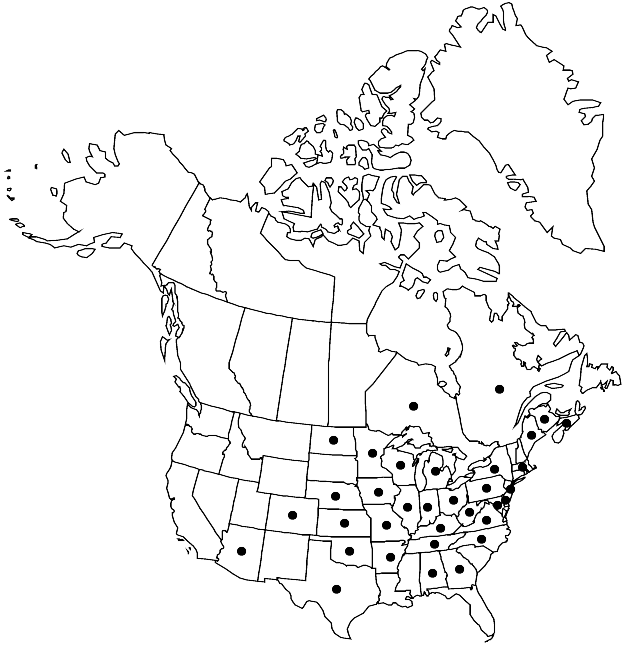Difference between revisions of "Homomallium adnatum"
in H. G. A. Engler and K. Prantl, Nat. Pflanzenfam. 231[I,3]: 1027. 1908.
FNA>Volume Importer |
imported>Volume Importer |
||
| Line 52: | Line 52: | ||
|publication year=1908 | |publication year=1908 | ||
|special status= | |special status= | ||
| − | |source xml=https:// | + | |source xml=https://bibilujan@bitbucket.org/aafc-mbb/fna-data-curation.git/src/bb6b7e3a7de7d3b7888a1ad48c7fd8f5c722d8d6/coarse_grained_fna_xml/V28/V28_821.xml |
|genus=Homomallium | |genus=Homomallium | ||
|species=Homomallium adnatum | |species=Homomallium adnatum | ||
Revision as of 22:49, 27 May 2020
Stems 2–3 cm, dark green or yellowish brown, branches straight. Leaves erect or slightly homomallous, 0.5–1 mm; margins erect, entire; apex abruptly short-acuminate or subulate; alar cells quadrate, walls thick, region extending 1/3 leaf margin; distal laminal cells 15–25 × 3–5 µm, walls thick. Seta yellow-orange, red, or purple, 0.5–1.5 cm. Capsule yellow to reddish brown, 0.9–1.5 mm. Spores 11–12 µm, smooth to minutely papillose.
Phenology: Capsules mature summer.
Habitat: Boulders (limestone or sandstone), moist areas, streams, shaded ravines, base of deciduous trees, exposed roots near streams or rivers
Elevation: low to high elevations
Distribution

N.B., N.S., Ont., Que., Ala., Ariz., Ark., Colo., Del., Ga., Ill., Ind., Iowa, Kans., Ky., Maine, Md., Mass., Mich., Minn., Mo., Nebr., N.J., N.Y., N.C., N.Dak., Ohio, Okla., Pa., Tenn., Tex., Va., W.Va., Wis., Asia.
Discussion
Homomallium adnatum is found throughout eastern North America. Occasionally it produces dense clusters of short brood branches as does Platygyrium repens, a corticolous species distinguished by its erect capsules, reflexed leaf margins and longer laminal cells. Although Hypnum cupressiforme is somewhat similar to Homomallium adnatum, it is distinguished by its longer leaves and alar cells that are restricted to the bottom 1/4 of the leaf margins. Homomallium sharpii is a similar species found in Mexico in comparable habitats; its plants have smaller branches (1 cm), differentiated stem and branch leaves, longer medial cells (more than 30 µm), and alar cells in small triangular groups.
Selected References
None.